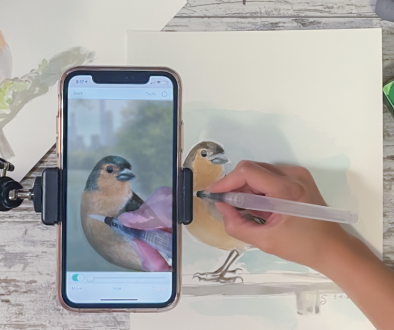AR Drawing Study of James McNeill Whistler
One of the richest sources of inspiration is the deep well of art that has been created throughout history. In recognition of how much there is to learn, Da Vinci Eye is proud to present our Master of the Month series. Each month, we will feature an artist, style, or subject from which to learn technique and to gain insight. Da Vinci Eye’s AR Mode, with its variety of features, allows us to dive deeper into what sparks our creativity.
In particular, tracing or mimicking the artwork of established talents offers many unique benefits. Going over the lines of experts is an experience that raises illuminating questions. What details might have caught their eye? How did they construct the image to cement it on the page? And through what visual language did they bring the scene to life? It is no surprise that this method of study is a longtime feature of classical art education.
Da Vinci Eye’s Master of the Month: James McNeill Whistler
Our inaugural Master is American painter James McNeill Whistler. While most known for painting his mother, Whistler was also a prolific sketcher. A look through his extensive catalog reveals an immense talent for sculpting form in light and shadow.
Da Vinci Eye’s AR Drawing Study of Whistler: Ponte del Piovan
Da Vinci Eye’s AR Mode is well suited for an initial sketch. With the original image anchored, we can easily sketch rough outlines. In this step, it’s helpful to move quickly, focusing on how the elements of the piece work together, rather than starting with the finer points.


With these sketched guidelines, we move to inking, using the original as a reference for shading and technique. In particular, it’s helpful to pay attention to texture, stroke weight, and line direction in Whistler’s sketches. Within those features, we can discover how he captured what he witnessed, bringing the scene into cross-hatched reality.



Curves, cross-hatching, and contours combine into a city scene centered on a bridge spanning a canal, signs of human activity scattered throughout the image. All of this is conveyed in monotone, summed up through short and simple lines. In copying this work, Ponte del Piovan (1879-80), one might be struck by the contrasts of light and shadow, the minimalist approach Whistler takes to certain elements, or the way he can keep the details from blurring together despite the lack of color. And finally, using the Da Vinci Eye app’s AR Strobe feature, we can compare the original to the one-of-a-kind reproduction we’ve created, learning from similarities and differences alike.


This month, we invite you to consider how Whistler might have seen the world, practice the ways he captured his sights on paper, and learn to play with that vision on your own terms.






